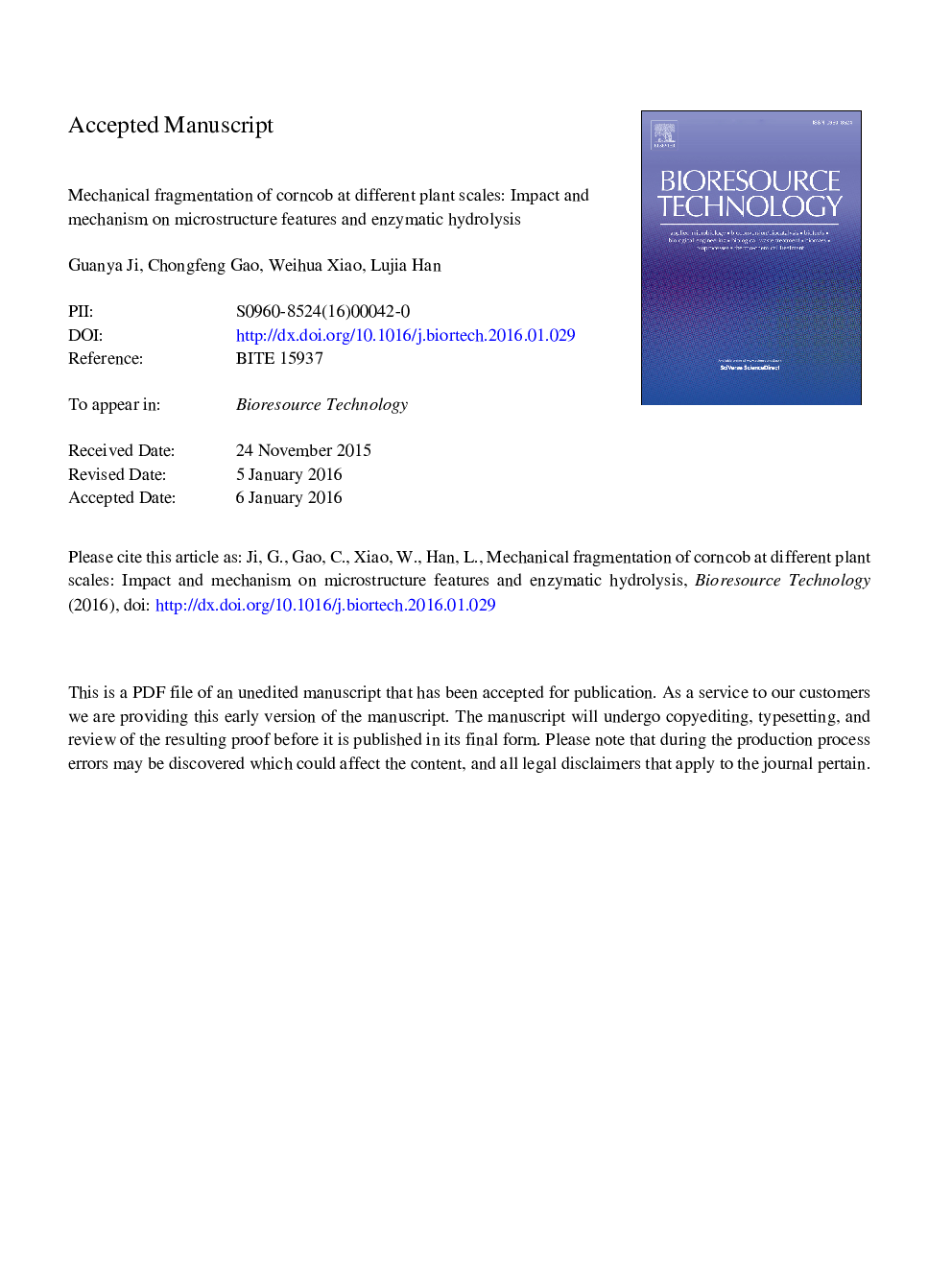| Article ID | Journal | Published Year | Pages | File Type |
|---|---|---|---|---|
| 679279 | Bioresource Technology | 2016 | 31 Pages |
Abstract
In this work, corncob samples at different scales, i.e., plant scale (>1 mm), tissue scale (500-100 μm) and cellular scale (50-30 μm), were produced to investigate the impact and mechanisms of different mechanical fragmentations on microstructure features and enzymatic hydrolysis. The results showed that the microstructure features and enzymatic hydrolysis of corncob samples, either at a plant scale or tissue scale, did not change significantly. Conversely, corncob samples at a cellular scale exhibited some special properties, i.e., an increase in the special surface area with the inner mesopores and macropores exposed to the surface; breakage of crystalline cellulose and linkages in polysaccharides; and a higher proportion of polysaccharides on the surface, which significantly enhanced enzymatic digestibility resulting in a 98.3% conversion yield of cellulose to glucose which is the highest conversion ever reported. In conclusion, mechanical fragmentation at the cellular scale is an effective pretreatment for corncob.
Keywords
Related Topics
Physical Sciences and Engineering
Chemical Engineering
Process Chemistry and Technology
Authors
Guanya Ji, Chongfeng Gao, Weihua Xiao, Lujia Han,
